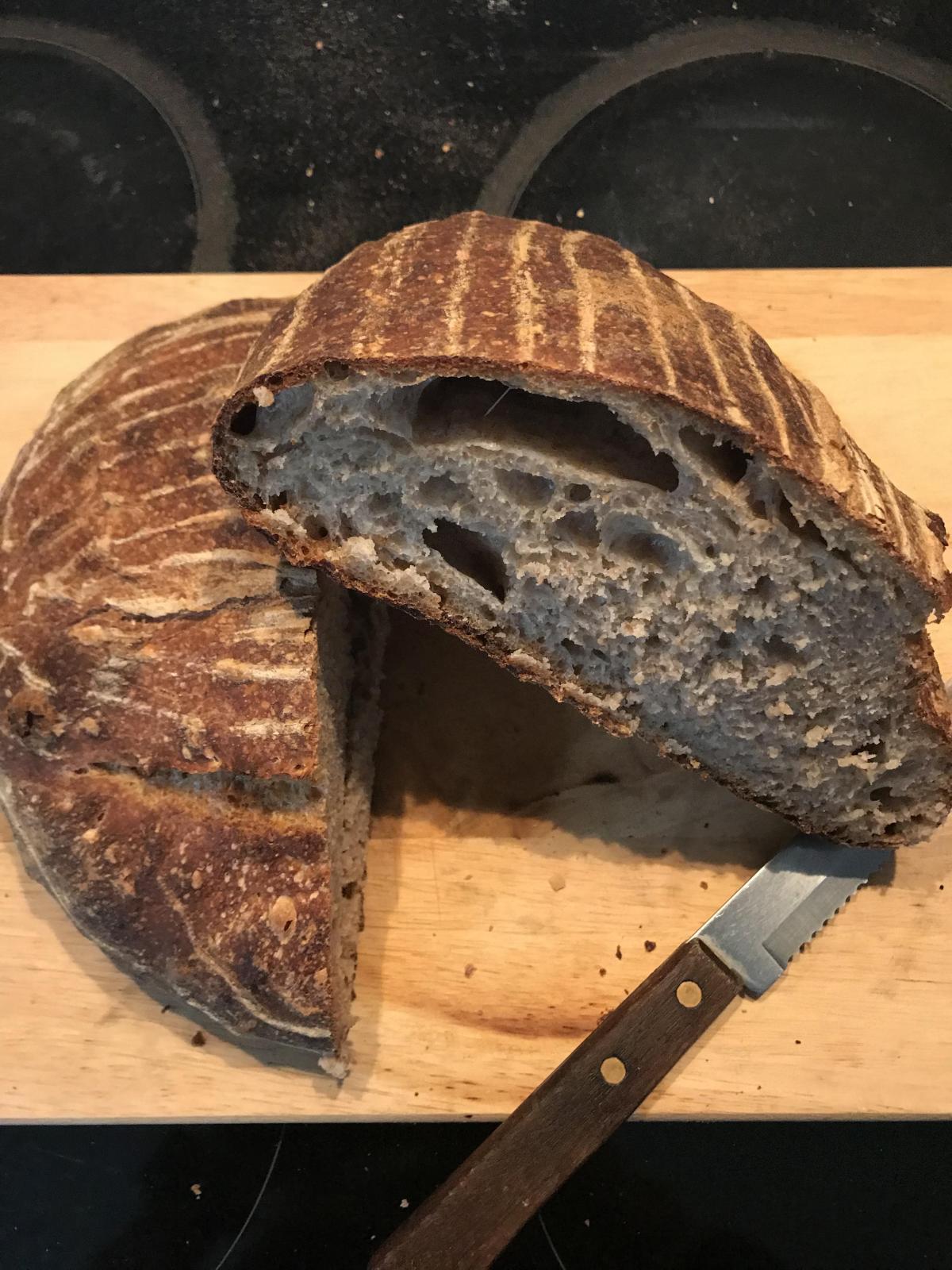
Saggy loaf!

I baked my second ever sourdough loaf today (first was a complete disaster!) and while there was some improvement it’s still what I’d class as way off base. The particular problem I had was that when tipping out of the proofing basket the ‘top’ of the loaf (i.e. the part lying on bottom of banneton during cold proof) was completely saggy. The ‘bulk’ of the dough felt like it was separate from that outer layer, which I think can be seen in the pictures (big holes in crumb along lid of loaf). I also didn’t notice any real development in size during bulk fermentation. I did 10 mins slap and fold kneading before going into the bulking with stretches and folds every half hour, and I think total bulk was 4 hours with about 12 hours cold in fridge. I tested my levain after build and it’s been fairly active all week (though at bake was only a week old), and it passed the float test before use. I think my shaping didn’t build enough tension as I overfloured the ‘seam’ side of the loaf which meant knitting together didn’t really work as it wasn’t sticky enough. Could this be it? Or would it be a problem with proofing? The shape didn’t hold at all at bake as this was supposed to be a batard and not a boule! Basically any and all feedback welcome! I think the recipe was 75% hydration. Thank you!!!


This isn't a bad loaf. If it tastes good then its a winner. While I feel there could be some improvement in judging the fermentation better (it's difficult I know! comes with practice and took me a long time - still learning) I'm thinking those caverns could be also a shaping issue. Are you getting flour inside the dough when shaping? Are you knocking out the larger bubbles all the while keeping the smaller ones?
Ah thank you, that’s really helpful. Do you have any tips for telling when fermentation is sufficient? Shaping was particularly difficult I think in part because I overfloured which meant I couldn’t ‘stick’ the folds to each other in the seam and then couldn’t build surface tension but I’ll hopefully get that a bit better next time! As for knocking out larger bubbles, is that just a natural by product of good technique or is there anything particular I should be doing?
"Watch the dough and not the clock" is the best advice. However when first starting off we don't know what we're really looking for. Took me a long time before it really clicked and I started to notice the not only the more obvious changes but the subtle ones too like how the dough feels. For the bulk ferment you're looking for an aerated and billowy dough with noticeable signs of bubbles just beneath the surface or around the edges. Should have a silky smooth appearance and feel too. But it really comes with practice.
For the final proof an all bread flour dough should be just under doubled and the more wholegrain a dough has in it the less it needs to rise. So a wholewheat dough should be about 80% risen. But this also comes with practice and is one of the hardest things to judge when making bread.
How about lowering the hydration for now to make it easier to handle. Then when you feel like you're getting the knack of it then start to slowly increase the hydration?
You’re right, I think I’ll seek a lower hydration recipe this weekend and see if that helps, using your tips for rise. Thank you!
the 123 recipe because it is wet enough to practice slap and folds stretch and folds but nit crazy wet where you need experience to shape it right 1 part levain, 2 parts water and 3 parts flour with 2% salt all based on weight and not volume - that will give you 71% hydration for a white bread. Ditch the bench flour . All it does is change the hydration of the dough, make things a mess and destroys shaping. You have a wood surface so just put a bit a flour on the surface, rub it in with the palms o your hands and then scrape off all the excess with a bench scraper. Nothing will stick to that. There was a post this week about Varda another Fresh Lofian that has a video showing her shaping in her bakery, That will show you how to get rid of the big bubbles and get the skin tight. Also on the King Arthur Web site and on YouTube Jeffery Hamelman shows you how to shape every kind of bread .
Happy SD baking - you are getting close now. We have all had flying roofs too!